Managing Data and Information
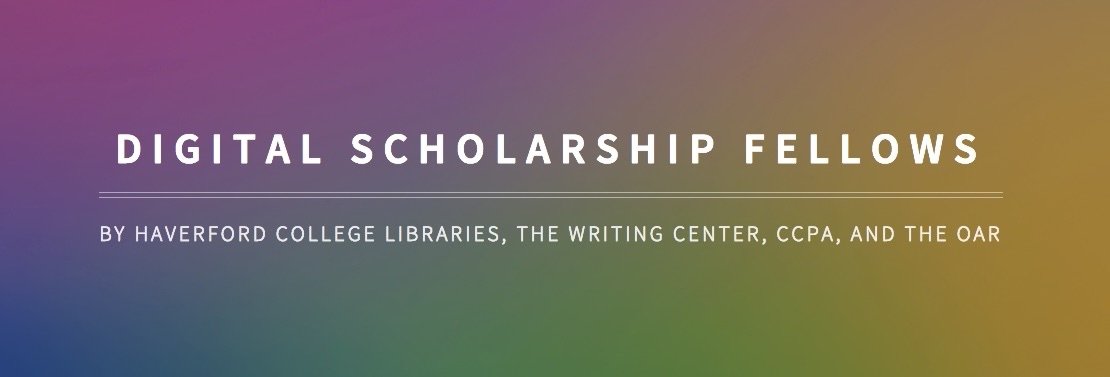
Unit 4
What is Data?
DEFINITION:
- information output by a sensing device or organ that includes both useful and irrelevant or redundant information and must be processed to be meaningful
- According to the Oxford Dictionaries data is defined as "facts and statistics collected together for reference or analysis."
- information in numerical form that can be digitally transmitted or processed
source: http://www.merriam-webster.com/dictionary/data
Examples of Data?
Pictures
Poems
Numbers
Music
Standards
Names
Dates
ANYTHING
Also, Data is a bit of a catch-all, catch-nothing term.
Data that isn't objective = ALL DATA
- All data is curated by someone, for some reason
- There is no such thing as objective, purely un-biased data
Evidence-based reform" is a classic example of misdirection. It offers the assurance that "smarter," more objective and fair decisions about sentencing and release can be made more efficiently by judges, parole boards and other authorized officials on the basis of proven "big data" risk-assessment tools and outcomes that maintain or strengthen public safety, even as they cut costs by reducing recidivism.
Evidence-Based Reform
risk scores are based primarily or wholly on an individual's prior characteristics, including criminal history
...because poor people and people of color bear the brunt of mass incarceration, "[p]unishment profiling will exacerbate these disparities."
Risk-assessment tools are part of a much larger, troubling context of data-driven, predictive criminal profiling and so-called "preventive" crime mapping and policing.
A Note on this from:
Professor Friedler, CS Dep't
"There are many issues with so-called evidence-based sentencing reforms - from the lack of basic statistical validity, to the lack of transparency, to their discriminatory impact"
More on data and bias from Professor Friedler on her blog
How do you manage your data and information?
-
Google Docs, Spreadsheets -
Excel and/or Word -
Twitter -
Tumblr -
Pinterest -
Flickr -
Photobucket
Examples of Humanities Digital Scholarship Projects
- Stanford Encyclopedia of Philosophy which organizes "scholars from around the world in philosophy and related disciplines to create and maintain an up-to-date reference work" (Zalta, ed., 2015).
- Indiana University Bloomington, Scholars' Commons provides support for digital scholarship in the humanities by partnerships with multiple digital humanities libraries such as HathiTrust, providing collaborative work spaces, mobile devices, laptops, interactive visualization, an IQ wall, and making the location close to the digitization lab, "lecture hall, collaboration rooms, and exhibition space" (Indiana University, 2015).
Examples (cont.)
- Roy Rosenzweig Center for History and New Media (RRCHNM) at George Mason University is developing Eagle Eye Citizen which is an "engaging, online and mobile-friendly interactive for K-12 students focused on Congress and civic participation" (RRCHNM. 2015).
- Educause Review on the growth of digital humanities and the three challenges in building your own digital humanities scholarship (Maron, 2015).
- Sustaining the Digital Humanities: Host Institution Support beyond the Start-Up Phase is a scholarly research article addressing Digital Humanities on multiple campuses and what type of research/research support is needed both digital and non-digital forms (Maron & Pickle, 2014).
What is data curation and management?
- "Data curation involves maintaining, preserving, and adding value to digital research data throughout its lifecycle."(Simms, 2015, Data Curation).
- Data management is a "dynamic cycle of activities that constantly influence one another." See figure (Simms, 2015, Data Curation).
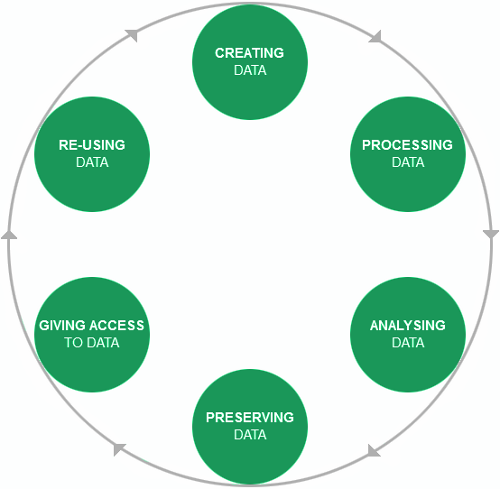
What is metadata?
-
Metadata means literally data about data
-
However, metadata is also data itself
-
it's a contextual issue--someone might view metadata as a subset of data, others may view metadata as a source of actual data
-
Think of your library's catalog and how each book or media source has a defined title, author, ISBN, etc. Each piece of description is a piece of metadata.
-
There are many different metadata standards that use different rules in the way different pieces of data can be described, such as Dublin Core, MODS, METS.
What are some descriptive data examples?
Creating a linked metadata record or a library record using MARC or MAchine Readable Cataloging. MARC is the back-end of the cataloging system that feeds into the search interface you see.
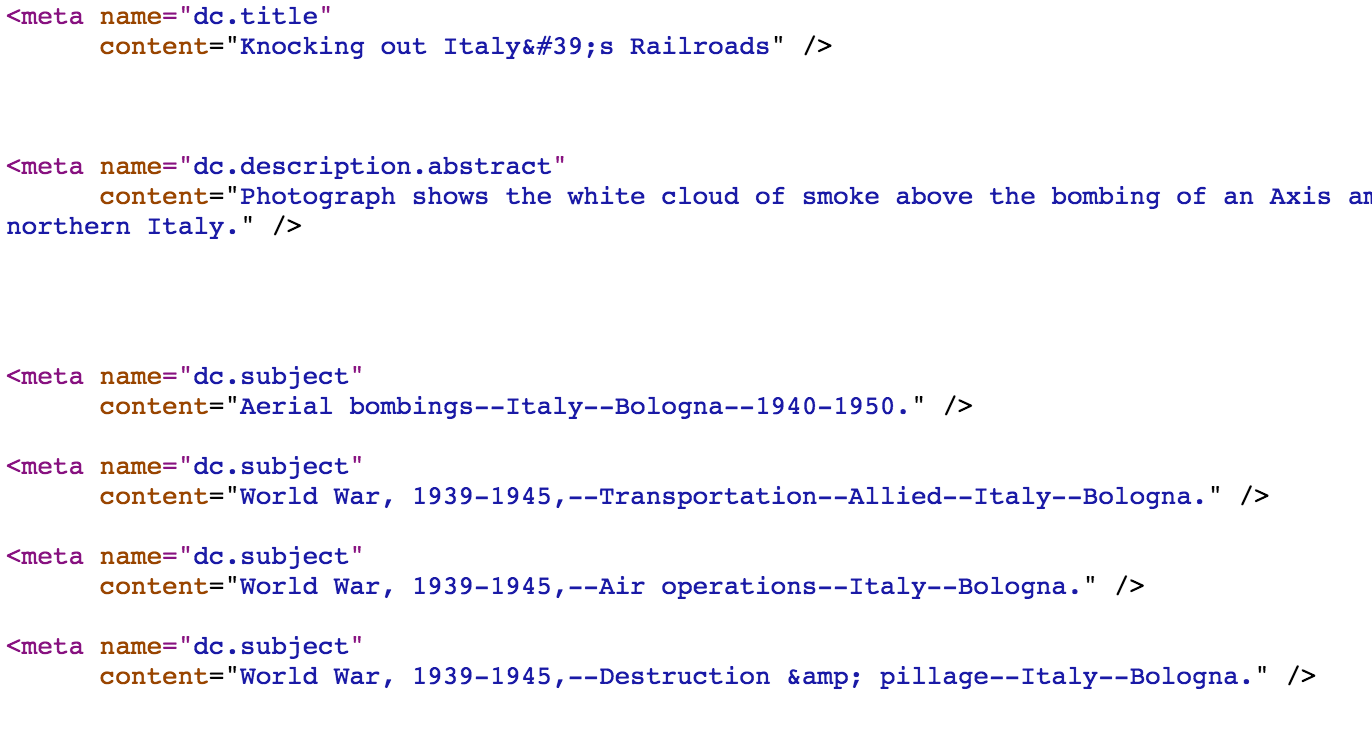
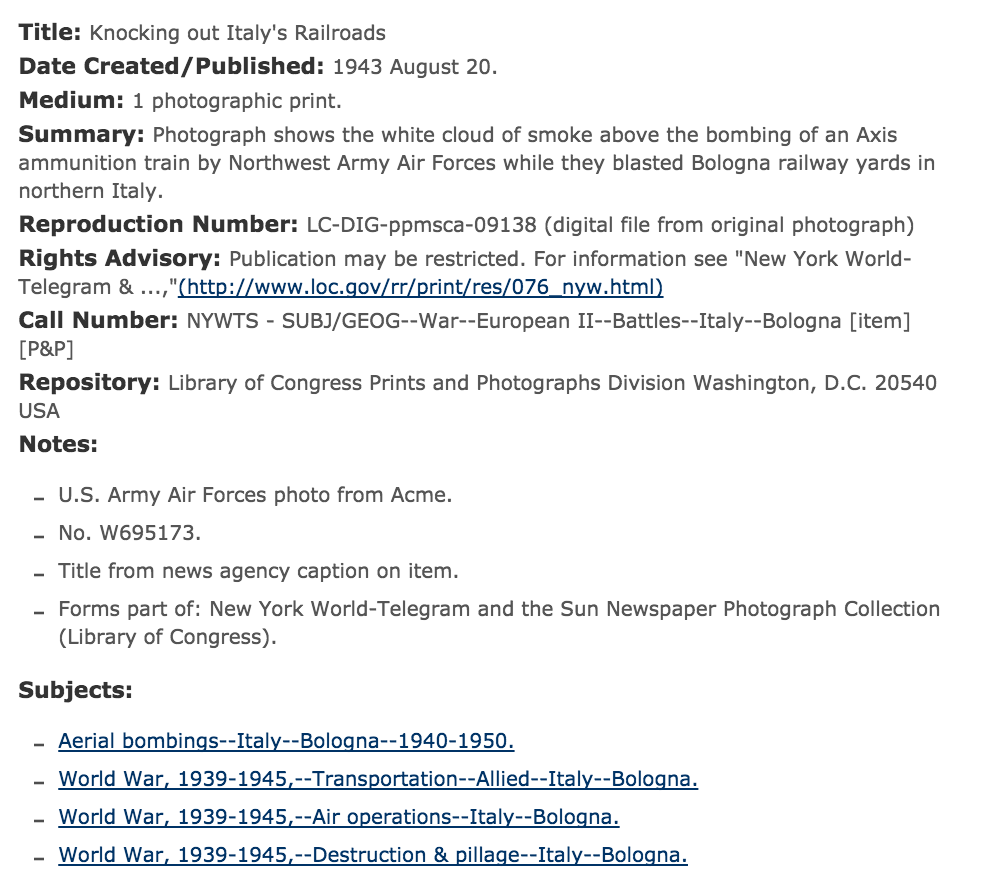
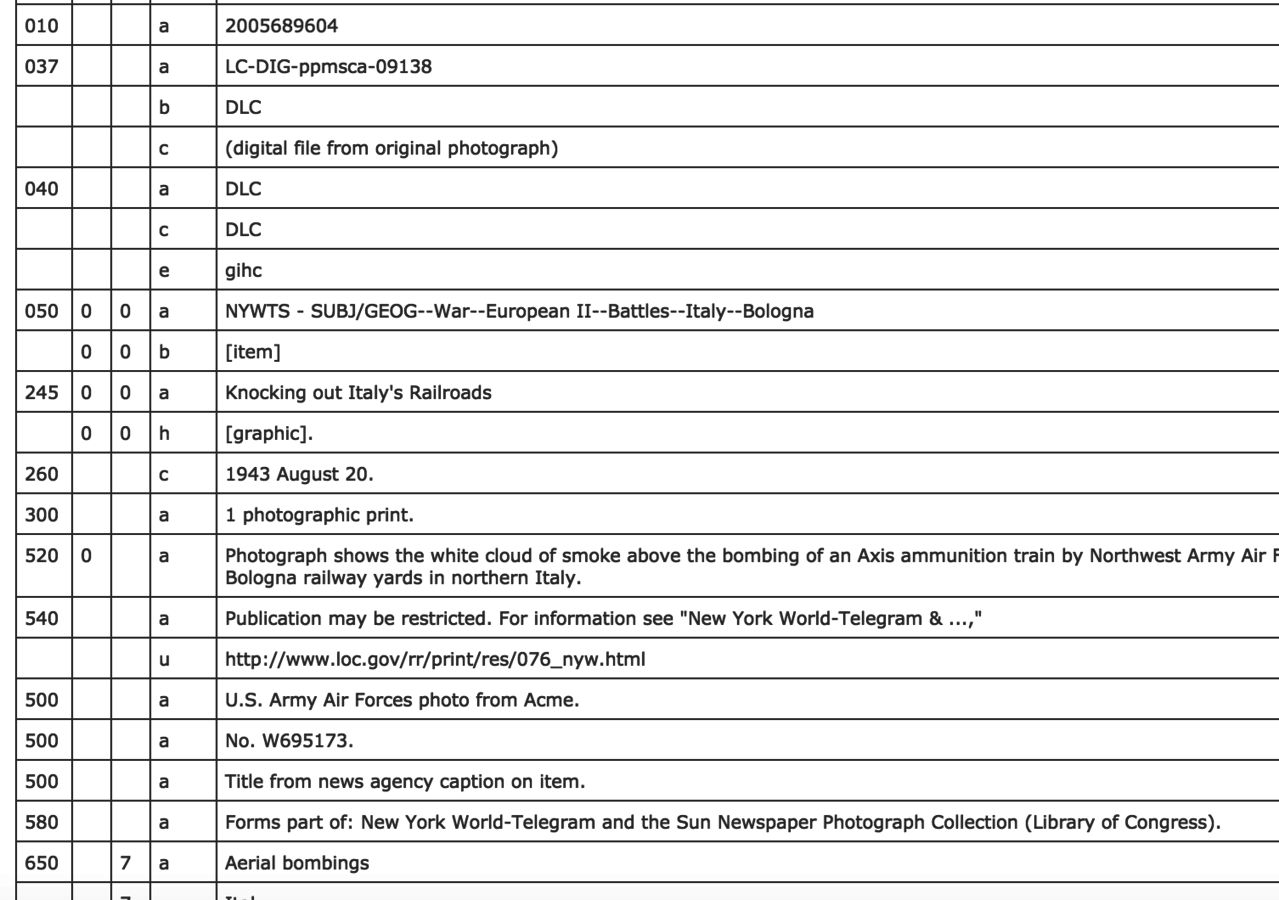
What are some descriptive data examples?

What are some descriptive data examples?

What are some descriptive data examples?

What are some ways of describing data to create new descriptive data (cont.)?
- Creating a folksonomy, a user-generated vocabulary for categorizing online content (includes hash tags on Twitter)
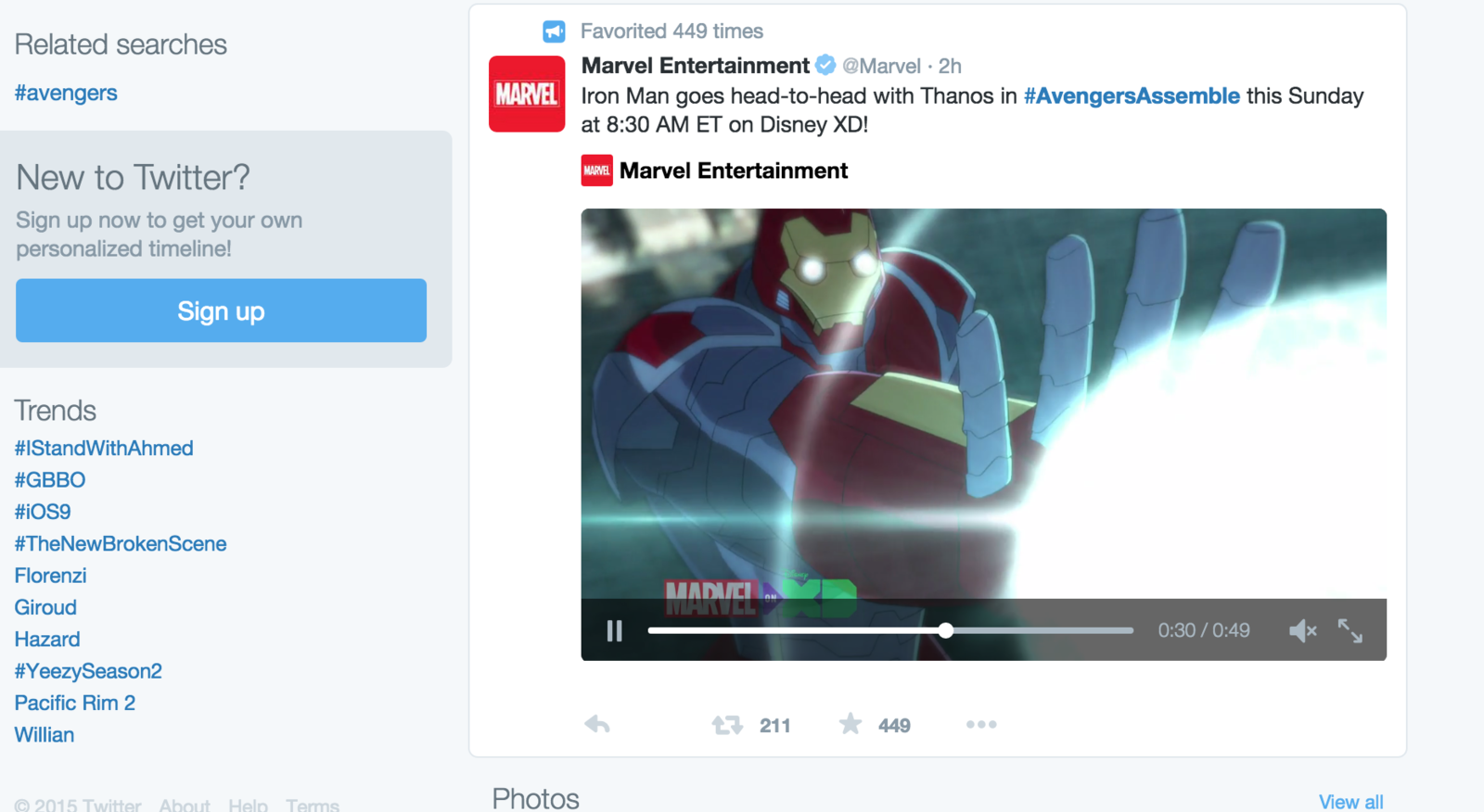
Interoperability and Sustainability?
-
Interoperability means a data record is able to be transmitted through different systems/standards i.e. being able to log-in with your Facebook into Spotify (and any other web programs)-- this means your personal data is interoperable being transmitted b/w Facebook and Spotify.
-
Sustainability means being able to access and preserve "an electronic record throughout its lifecycle, regardless of the technology used when it was originally created" (National Archives, 2015).
Semantic Web
-
Semantic Web - a web of interrelated data, according to the W3C or World Wide Web Consortium the Semantic Web is two things:
- "common formats for integration and combination of data drawn from diverse sources"
- "language for recording how the data relates to real world objects" by "being about the same thing." i.e. the term cat would be related and link to terms such as bobcat or cheetah.
Data and its processes are relatively simple.....
Another Possible Activity
-
Here is a collection of poems... :)
-
How could we start drawing out some models/how we could start laying out a database that would house data about these poems of William Carlos Williams
Poems-to-Data Activity
Think about metadata.
Think outside the box.
- How could the poet's adjectives be cataloged?
- Is there a tone or color motif you could make data out of?
- How would you organize this data to be able to access certain information (construction paper, pens, scissors)?
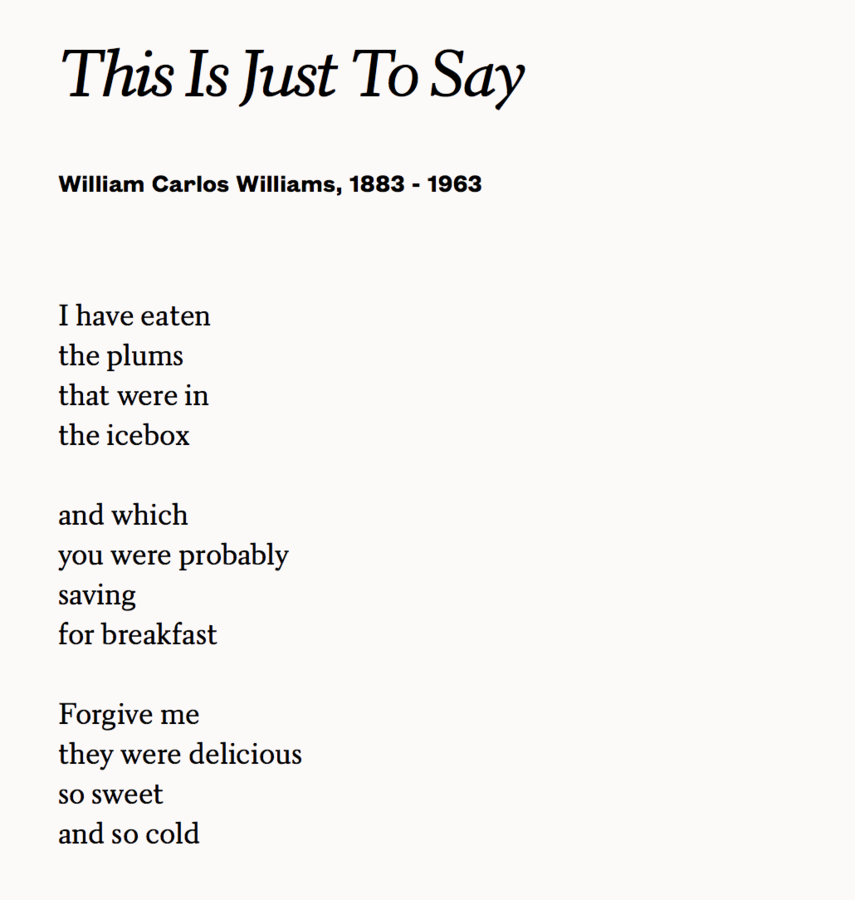
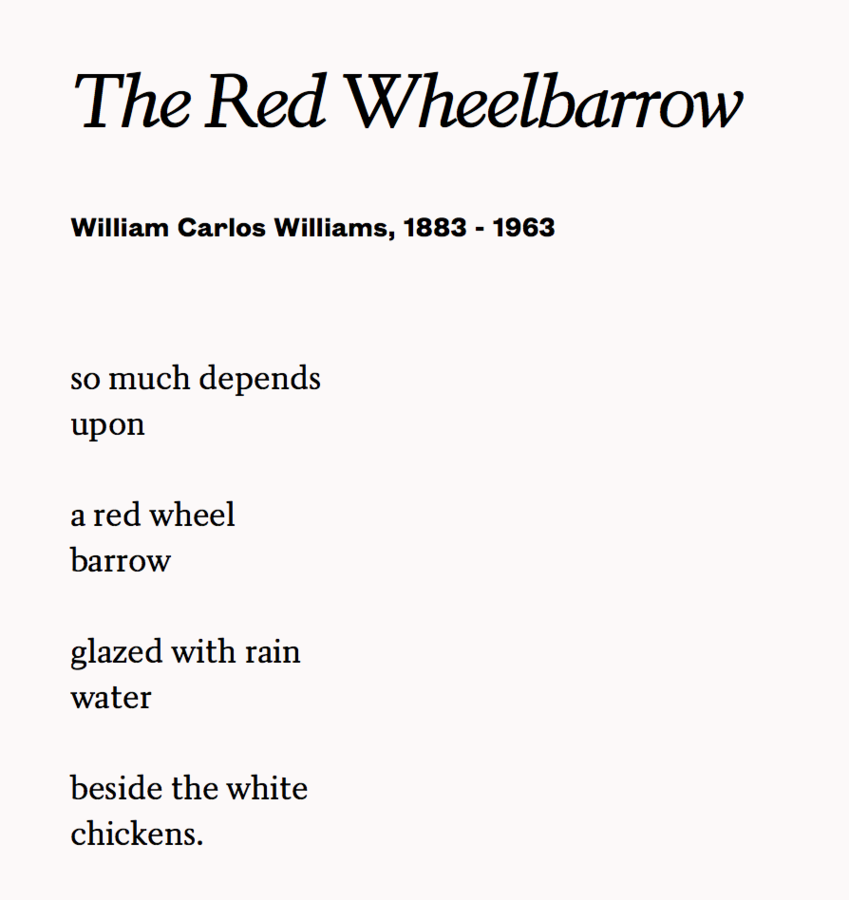
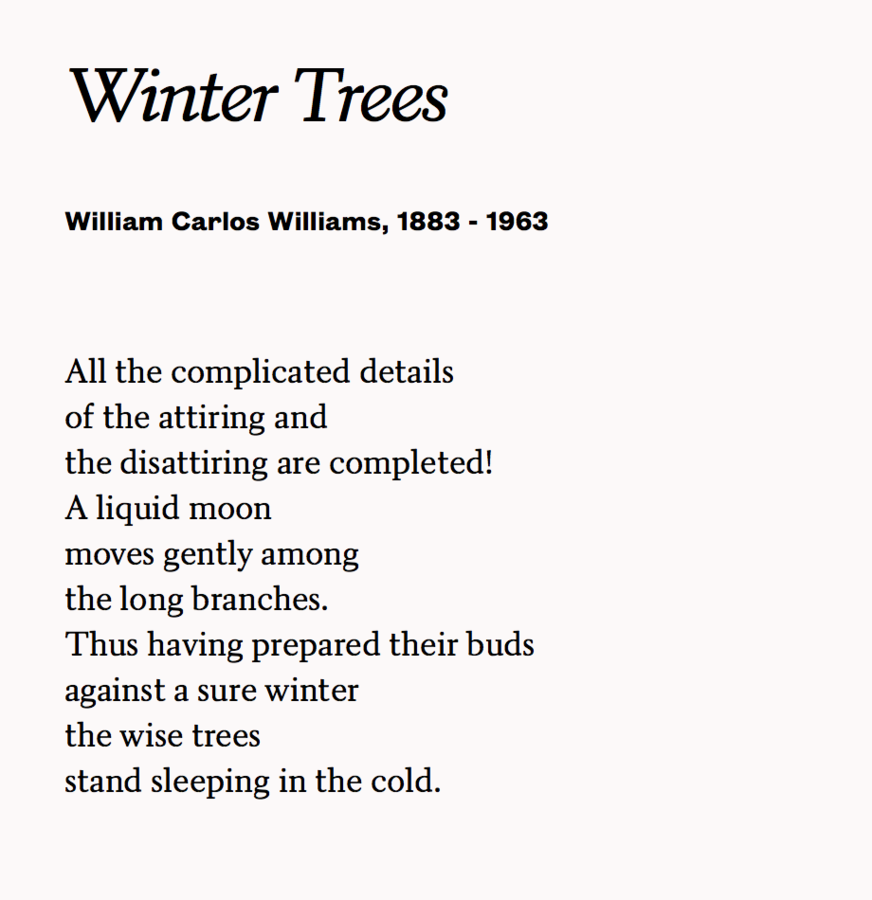

Section 1: Let's make our own maps with CartoDB!
- Check out instructions on LibGuides
- Sign up for CartoDB with your Haverford gmail account
- Decide whether to make USA Airports (using preset data in CartoDB) and/or make your own map with your city datapoints
- See directions via LibGuides Unit 4
Section 2: Cleaning and Refining Data to Make Maps
- Check out instructions on LibGuides
- Log in to CartoDB
- Download Monthly Meeting Minutes raw data and Quaker Meeting Geo Data (located under QMH Excel Documents).
- Discuss how to create CartoDB map with geo-coordinates (Latitude, Longitude)and clean, repurpose and manage data.
References
-
https://www.youtube.com/watch?t=90&v=yKvxWk5wwUU -
http://www.loc.gov/pictures/item/2005689604/ -
https://twitter.com/hashtag/AvengersAssemble?src=hash -
http://www.loc.gov/marc/umb/um01to06.html -
http://www.archives.gov/records-mgmt/initiatives/sustainable-faq.html -
http://www.w3.org/2001/sw/ -
http://www.oreilly.com/pub/a/web2/archive/what-is-web-20.html?page=4 - http://plato.stanford.edu/
- https://libraries.indiana.edu/scholars-commons
- http://chnm.gmu.edu/
- http://www.sr.ithaka.org/sites/default/files/SR_Supporting_Digital_Humanities_
- http://er.educause.edu/articles/2015/8/the-digital-humanities-are-alive-and-well-and-blooming-now-what